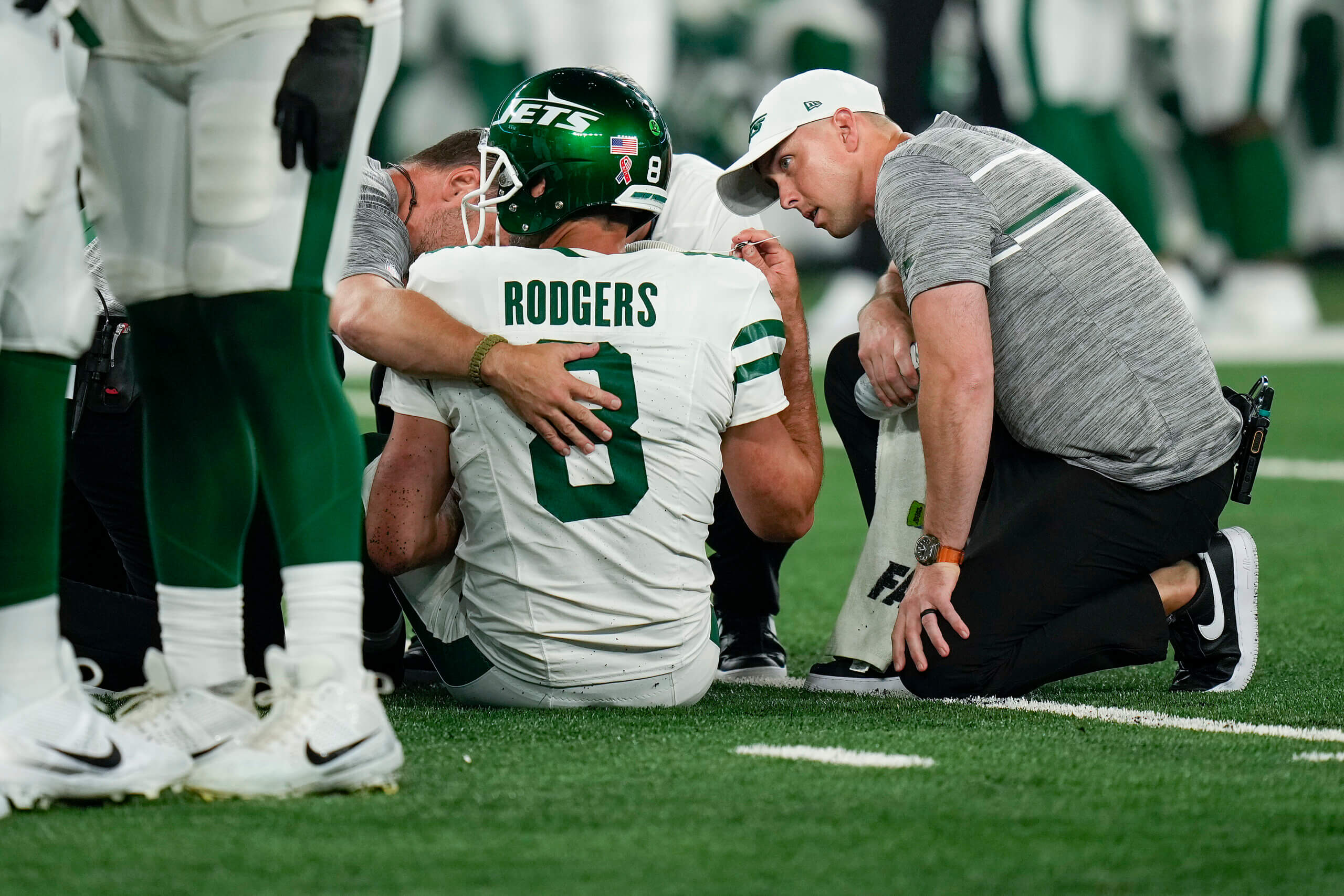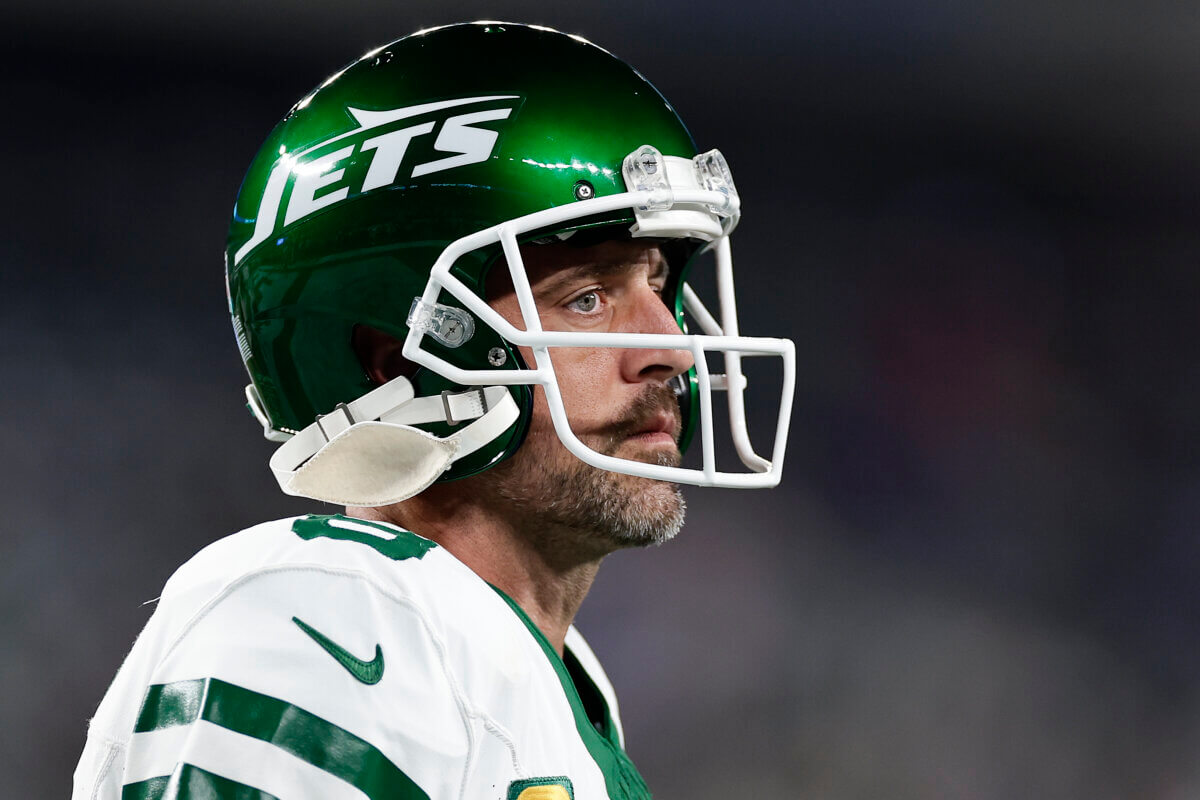Note: if you purchase something through one of our affiliate links, Schneps Media may earn a commission.
Aaron Rodgers (AP Photo/Adam Hunger)
Aaron Rodgers was the chosen one to change everything for the New York Jets. This, for once in the downtrodden franchise’s existence, was supposed to be different.
It felt different. For months talking heads and national pundits alike were debating whether or not the Jets were legitimate Super Bowl contenders instead of making them the butt of their jokes after acquiring the future Hall-of-Fame gunslinger from the Green Bay Packers.
They were calling MetLife Stadium, their shared home with the historically more successful big brother Giants, “JetLife Stadium”.
Green was in as No. 8 Rodgers jerseys popped up all over the country as the most-sold uniform. Jets ticket prices soared more than 400%. They had the seventh-best odds to win the Super Bowl.
And finally, after months of pontificating and raising hopes and seemingly changing the direction of a franchise mired in dysfunction for the better part of the last five decades, there he was running out of the tunnel with a singular spotlight on him carrying an American flag on the 22nd anniversary of Sept. 11 — what was supposed to be a long-awaited turning point for the team.
At 8:15 p.m. ET, a Super Bowl-hopeful season kicked off. Seventeen minutes later, it evaporated.
Four snaps into his Jets career, Rodgers was sitting on the turf grabbing at his left leg. He was carted to the locker room and didn’t return. On Tuesday morning, an MRI confirmed that his season was over due to a torn Achilles.

Hang this on the ransacked mantle of other Jets hopes and dreams that, almost predictably, didn’t work out. Actually, hang this one above almost all of them — and there are a lot of them.
After losing the AFC Championship Game in 1998 to the Denver Broncos, quarterback Vinny Testaverde went down with a season-ending Achilles injury in Week 1 of the…
Read the full article here

Leave a Reply